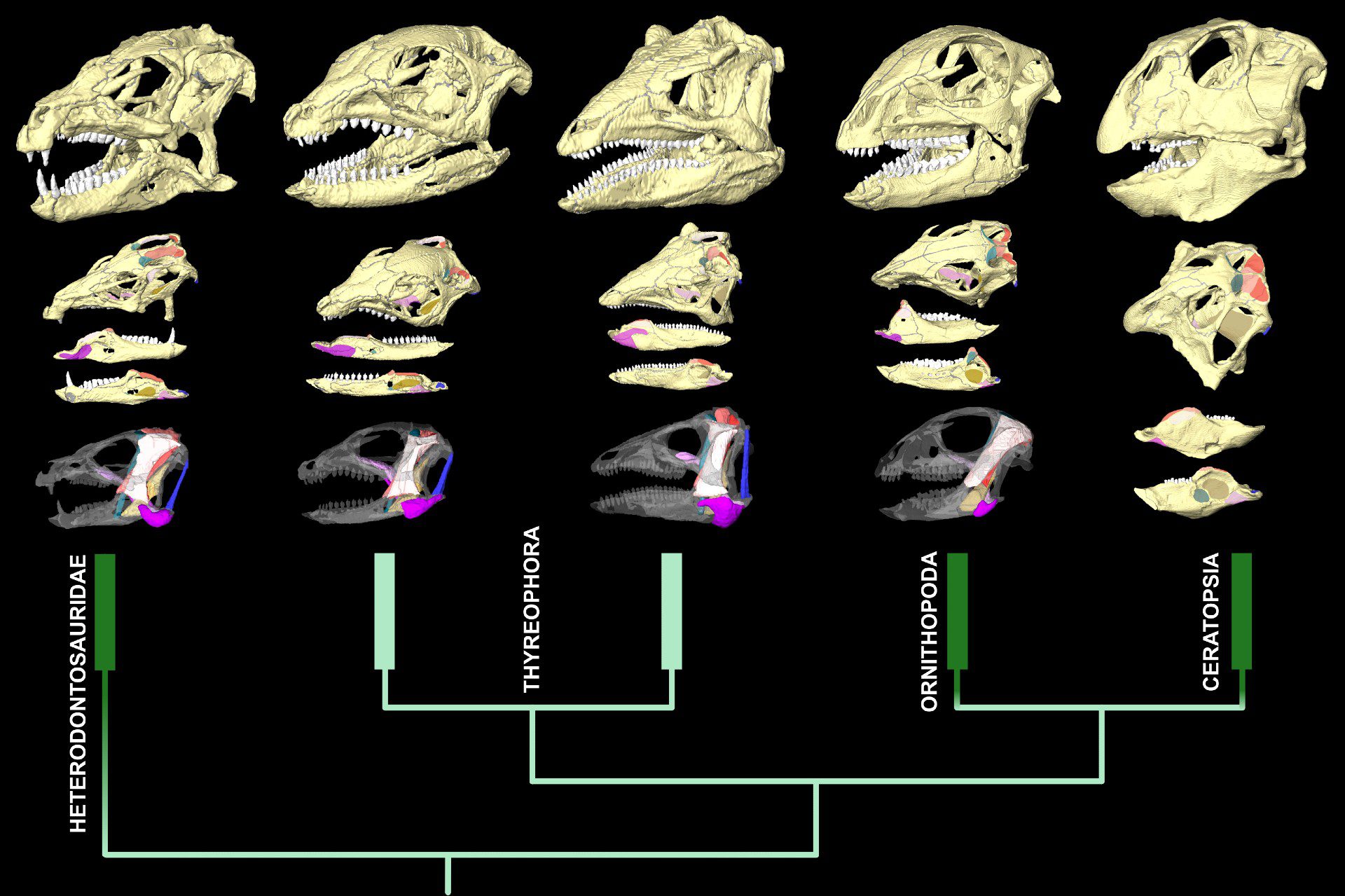Dinosaurs came in all shapes and sizes, so it may not be surprising to learn that they had different ways to approach food. But a new study has shown that there are a surprising number of ways that ‘veggie’ dinosaurs, even among closely related species, approached plant-based foods, and that these differences are important for mapping their subsequent evolution.
Scientists from the Natural History Museum, and the Universities of Bristol and Birmingham, used computed tomography (CT) scans of five plant-eating dinosaurs – Heterodontosaurus, Lesothosaurus, Scelidosaurus, Hypsilophodon and Psittacosaurus – that belong to the group Ornithischia, to reconstruct their jaw muscles and measure their bite force. Although the eating methods of later species in this group, like Triceratops and Stegosaurus, have already been examined, less attention has been paid to their earlier ancestors.
The scientists used data from existing bird and crocodile species to help indicate where the muscles on the skulls would have been. After carrying out a “finite element analysis”, a technique that divides the skulls into thousands of small parts, or elements, the team simulated the skulls biting an object to see how the different elements responded to the force.
The models created a heat map that showed the areas on the skulls that were strongly stressed or barely stressed at all. What this revealed was that, even though the dinosaurs were eating plants, they all had different ways to do so.
The image compares the the skulls and jaw muscles of these dinosaurs. Image credit: David Button
Dr Stephan Lautenschlager, from the University of Birmingham, said in a statement that the research showed how “each dinosaur tackled the problems posed by a plant-based diet by adopting very different eating techniques. Some compensated for low eating performance through their sheer size, whilst others developed bigger jaw muscles, increased jaw system efficiency, or combined these approaches.”
“Although these animals looked very similar, their individual solutions to the same problems illustrates the unpredictable nature of evolution.”
Professor Paul Barrett, a palaeontologist at the Natural History Museum, added, “If you want to understand how dinosaurs diversified into so many different types so effectively, it’s critical to learn how they evolved to feed on a such a wide variety of vegetation in so many ways. This diversity in feeding mechanisms set them up to dominate life on land for millions of years to come.”
Heterodontosaurus, which lived in the early Jurassic era, had large jaw muscles that gave it a high bite force, allowing it to eat tough vegetation. Scelidosaurus, a contemporary species, had a similar bite force, but its jaw muscles were much smaller compared to its skull. According to the study, Scelidosaurus achieved its high bite force by having a “greater absolute body size”.
Then there was Hypsilophodon, a genus of dinosaur from the Early Cretaceous period, whose skull had much smaller muscles, but were more efficient at tackling plants due to their ability to reorient their jaw muscles. Like Heterodontosaurus, Psittacosaurus, another genus from the Early Cretaceous period, benefited from having large jaw muscles but it also developed greater efficiency in its approach.
The research is an important step in our understanding of how animals evolved to occupy different and novel ecological niches. It demonstrates that even closely related animals with similar diets may not evolve the same characteristics or approaches to their environment. According to Dr David Button, the lead author of the study, this “highlights how innovative and unpredictable evolution can be.”
The study has been published in the journal Current Biology.
Source Link: Vegetarian Dinosaurs Evolved Different Ways To Eat The Same Food
